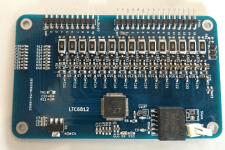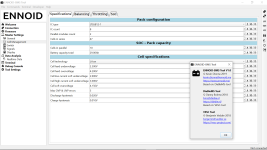Great progress! can't wait to see production availability and user feedback.
My design thinking, is to supplement the every-charge cycle balancing with occasional as-needed maintenance sessions using either
RC "hobby" chargers, or
dedicated active balancers at higher balancing current rates,
for packs with older / worn / more imbalanced cells.
Regular usage cycling will use bulk chargers at the appropriate (lower) voltage and (earlier) termination algorithm oriented toward maximum longevity.
Hence my desire for external balancing as needed. Obviously using new, top-quality, well-matched cells, these external re-balancing sessions may be months or even years apart.
I'm thinking of a "sub-pack" modular design based on 6S units, connected serially from 12S up to 24S for now, maybe 30S later.
The serial connection between these modules needs to be broken down for the periodic testing / maintenance sessions, then reconnected for normal usage cycling.
Do you see issues with this scheme, wrt your BMS design?
My design thinking, is to supplement the every-charge cycle balancing with occasional as-needed maintenance sessions using either
RC "hobby" chargers, or
dedicated active balancers at higher balancing current rates,
for packs with older / worn / more imbalanced cells.
Regular usage cycling will use bulk chargers at the appropriate (lower) voltage and (earlier) termination algorithm oriented toward maximum longevity.
Hence my desire for external balancing as needed. Obviously using new, top-quality, well-matched cells, these external re-balancing sessions may be months or even years apart.
I'm thinking of a "sub-pack" modular design based on 6S units, connected serially from 12S up to 24S for now, maybe 30S later.
The serial connection between these modules needs to be broken down for the periodic testing / maintenance sessions, then reconnected for normal usage cycling.
Do you see issues with this scheme, wrt your BMS design?



